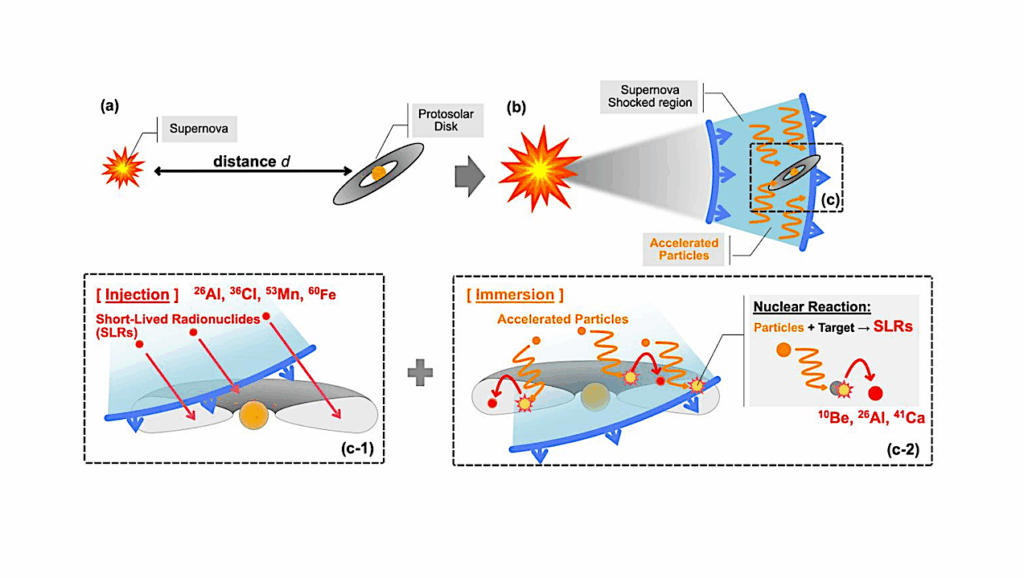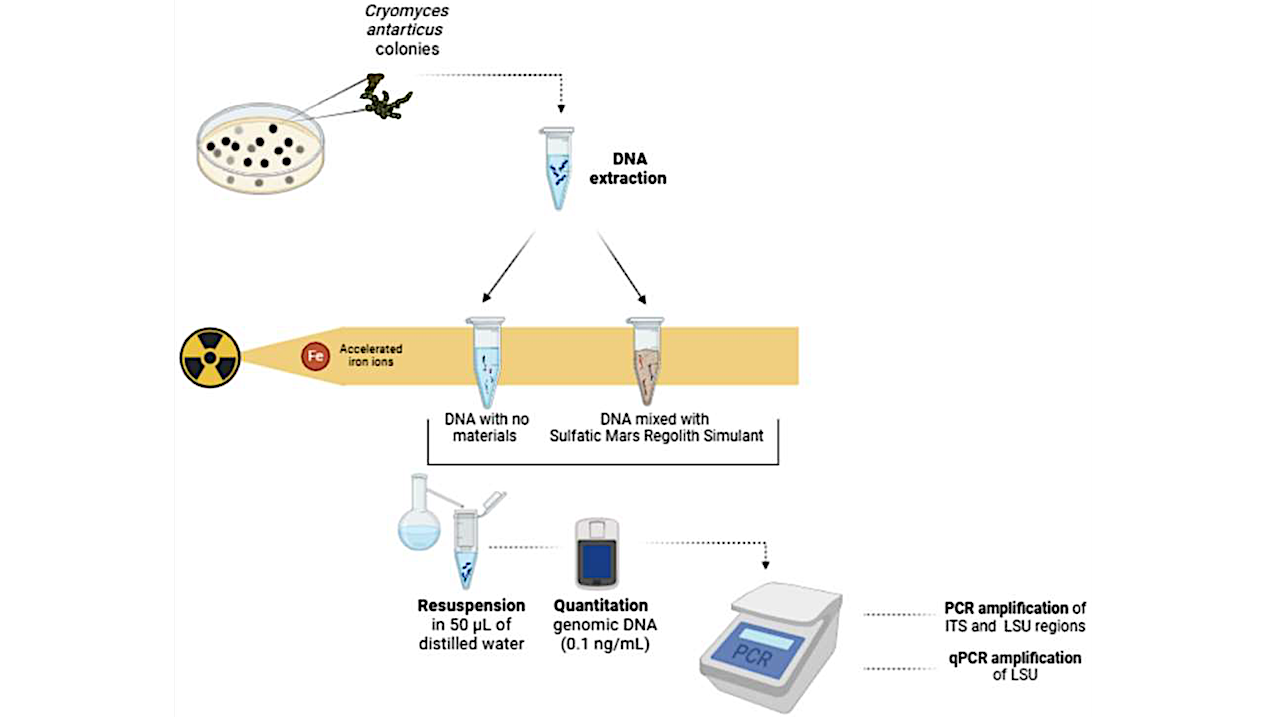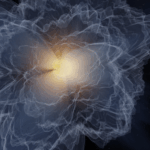Now Reading: An Assessment of Organics Detection and Characterization On The Surface Of Europa With Infrared Spectroscopy
-
01
An Assessment of Organics Detection and Characterization On The Surface Of Europa With Infrared Spectroscopy
An Assessment of Organics Detection and Characterization On The Surface Of Europa With Infrared Spectroscopy


Left panel: simulated, noise-free spectra of water ice (dashed dark-blue curve) and selected trace species of interest. Middle panel: simulated spectra of non-water-ice species mixed with water ice, at an abundance fraction of 5%. The dashed dark-blue curve is a pure water-ice spectrum for reference. Right panel: zoom-in of the (a) 3.2–3.6 μm and (b) 3.8–5.0 μm regions of four spectra from the middle panel. While organics are spectrally rich in the 3–5 μm wavelength range, on Europa we expect them to be present in trace amounts in a background of water ice, which leads to weak absorption signatures (on the order of a few percent in strength) on top of a mostly water-ice-rich continuum. Other heavily hydrated, non-ice materials may also be plausible background components, and exploring their effects on detectability is an interesting direction for future work. The key physical parameters used in these simulations are as follows: incidence angle = emergence angle = 45◦ ; phase angle = 90◦ ; average grain size = 50 μm. Re>ectance is expressed in units of radiance factor. — astro-ph.EP
Organics, if they do exist on Europa, may only be present in trace amounts on the surface. NASA’s upcoming mission Europa Clipper is going to provide global, high quality data of the surface of Europa in the near-infrared (NIR), specifically the 3-5~μm region, where organics are rich in spectroscopic features.
In this work we investigate Europa Clipper’s ability to constrain the abundance of selected trace species of interest that span different chemical bonds found in organics, such as C-H, C=C, C≡C, C=O and C≡N, via NIR spectroscopy in the 3-5~μm wavelength region. We simulate reflectance spectra of these trace species mixed with water ice, at varying SNR and abundance fractions.
The evidence for the trace species in a mixture is evaluated using two approaches: 1) calculating average strength of absorption feature(s), and 2) Bayesian model comparison (BMC) analysis. Our simulations show that sharp and strong spectroscopic features of trace (∼5% abundance by number) organic species should be detectable at >3σ significance in Europa Clipper quality data.
A BMC analysis pushes the 3σ detection threshold of trace species even lower to <1% abundance. We also consider an example with all trace species mixed together, with overlapping features, and BMC is able to retrieve strong evidence for all of them and also provide constraints on their abundance.
These results are promising for Europa Clipper’s capability to detect trace organic species, which would allow correlations to be drawn between the composition and geological regions with possibly endogenic material.
Ishan Mishra, Nikole Lewis, Jonathan Lunine, Kevin P. Hand
Comments: 18 pages, 13 figures, published in the Planetary Science Journal on June 2, 2025
Subjects: Earth and Planetary Astrophysics (astro-ph.EP)
Cite as: arXiv:2506.01842 [astro-ph.EP] (or arXiv:2506.01842v1 [astro-ph.EP] for this version)
https://doi.org/10.48550/arXiv.2506.01842
Focus to learn more
Journal reference: Ishan Mishra et al 2025 Planet. Sci. J. 6 130
Related DOI:
https://doi.org/10.3847/PSJ/adcfa2
Focus to learn more
Submission history
From: Ishan Mishra
[v1] Mon, 2 Jun 2025 16:28:13 UTC (1,834 KB)
https://arxiv.org/abs/2506.01842
Astrobiology, Astrochemistry,
Stay Informed With the Latest & Most Important News
-
 012024 in Review: Highlights from NASA in Silicon Valley
012024 in Review: Highlights from NASA in Silicon Valley -
 02Panasonic Leica Summilux DG 15mm f/1.7 ASPH review
02Panasonic Leica Summilux DG 15mm f/1.7 ASPH review -
 03From Polymerization-Enabled Folding and Assembly to Chemical Evolution: Key Processes for Emergence of Functional Polymers in the Origin of Life
03From Polymerization-Enabled Folding and Assembly to Chemical Evolution: Key Processes for Emergence of Functional Polymers in the Origin of Life -
 04How New NASA, India Earth Satellite NISAR Will See Earth
04How New NASA, India Earth Satellite NISAR Will See Earth -
 05And Thus Begins A New Year For Life On Earth
05And Thus Begins A New Year For Life On Earth -
 06Astronomy Activation Ambassadors: A New Era
06Astronomy Activation Ambassadors: A New Era -
07SpaceX launch surge helps set new global launch record in 2024




















